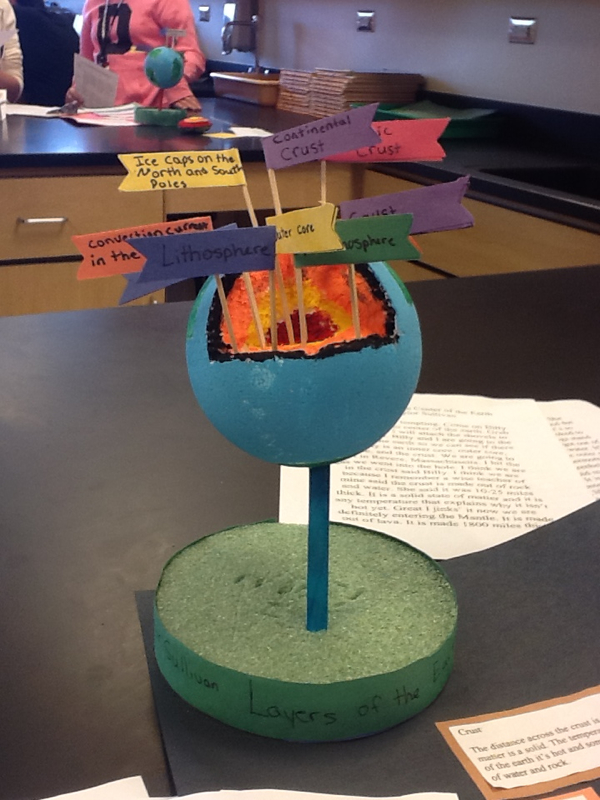


The evidence that has convinced scientists that the mantle is solid comes from the study of seismic waves. Because the mantle exists under such extreme heat and pressure (~1,000° Celsius), it is ductile, like warm soft wax or asphalt, or silly putty, and is capable of moving and deforming at really slow rates of a few centimeters per year. The lower region is part of the asthenosphere and is referred to as "fluid," which is not in reference to its phase of matter, but rather to the plasticity of the asthenosphere. The upper region is part of the lithosphere it is very rigid and exists as the bottom of our tectonic plates. For our purposes, 1 centimeter will equal 1,000 kilometers.Ī commonly held misconception is that the Earth's mantle is liquid because we refer to the lower portion of it as being "fluid." However, the most widely accepted current scientific understanding is that the mantle is solid. In this activity, we will make a model of the Earth's layers. Building scale models of the Earth can help engineers plan the routes and orbits of space flights, or design instruments that help predict earthquakes, or invent robots to travel into the different layers to collect data. Engineers sometimes build detailed scale models of objects to observe how parts fit together and/or move. For example, perhaps 1 inch corresponds to 1 foot.

It is measured to a "scale" that corresponds to the actual size. A scale model has the same shape and components and relative proportions as the actual object. Or a toy car as a smaller scale model of a full-size car. You could think of a doll as a smaller scale model of a person. It is made to be the same as the original object but at a different size than the real object. Who can tell me what a "scale model" is? (Listen to student ideas.) A scale model is a smaller or larger version of an object. In the crust layer, sometimes the plates collide, or stick together, and when this happens, earthquakes occur. Even in high-pressure and high-temperature conditions, it can move (deform) only very slowly, perhaps a few centimeters a year. Some scientists describe it as having the consistency of warm wax or warm asphalt, or even silly putty. The solid crust "floats" along in plates very slowly on top of the mantle. Can you guess why? (Listen to student ideas.) Well, if we tried to travel all the way to the Earth's inner core, we would be crushed into pieces from the very high pressure, and be burned up from the extreme heat! It is not a friendly environment for humans. Most research about the Earth comes from studying the crust. The inner core, outer core and mantle experience extremely high pressures and temperatures. The crust is the thinnest layer of the Earth and is the layer on which we live. (Draw Figure 1 on the classroom board, or show students a suitable diagram or projected image.) The inner core, mantle and crust are solid, and the outer core is molten, or liquid. You may not post this resource anywhere on the Internet.The Earth is a sphere made of several layers: the inner core, outer core, mantle and crust.

If your colleagues would like to use this file, please purchase additional licenses at a discount. You may not modify content, translate the file, share the file, or resell the content in any way. Keywords: 3D layers of the Earth project, 3D Earth's layers project, 3D Earth Layers project, 3D model of the layers of the Earth, 3D model layers of the Earth project, 3D layers of the Earth project ideas.īy purchasing this file, you are agreeing to use this file in your classroom only. This Earth's layers project for middle school includes directions, research/notes sheets, and rubric.ģD model layers of the Earth project topics covered include: This project will have your students creating amazing 3D projects of the layers of the Earth.


 0 kommentar(er)
0 kommentar(er)
